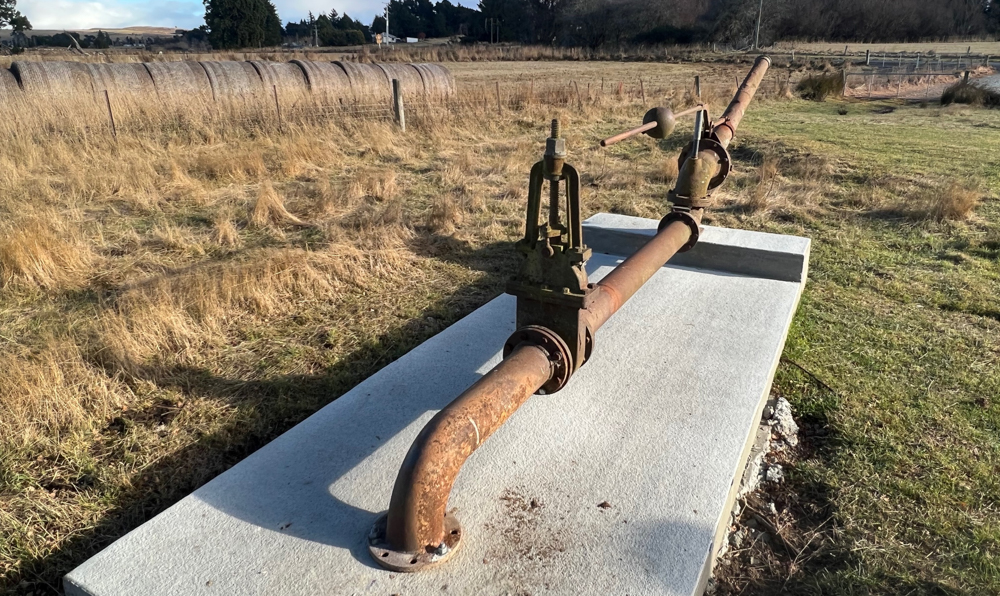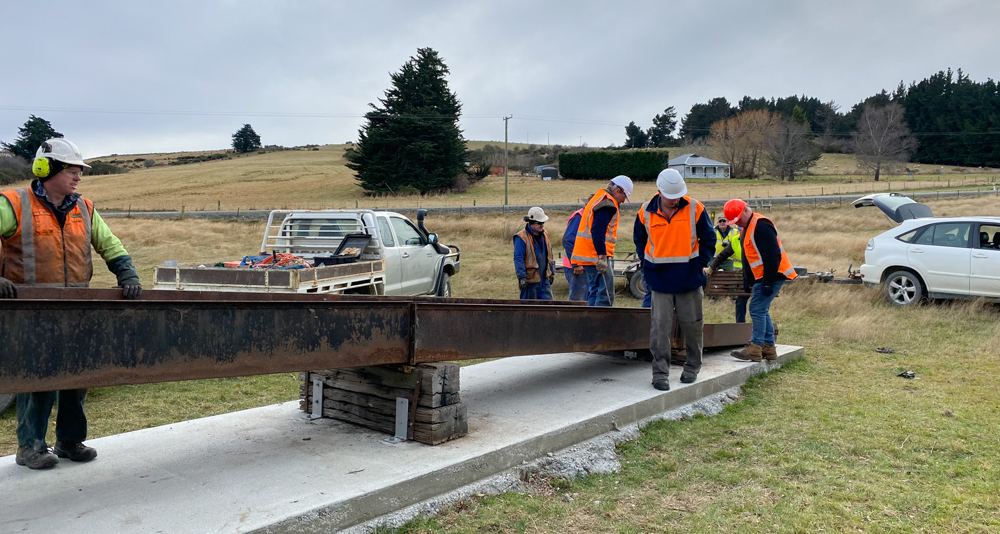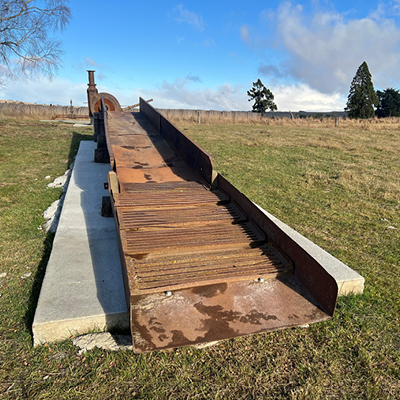Gravel Pumping Display


-
Restored historic gravel pumping equipment
-
The Macraes pond is an example of historic dredging activities
-
Evidence of paddocking still visible
Gold dredging was attempted on two occasions at Macraes Flat, in 1898 and 1901. Neither was a success, and each time the dredge was shut down and moved elsewhere within a short time. The first dredge was working the ground adjacent to Macraes Township, but then it closed after ten weeks due to sticky clay. The ground was later re-worked by gravel pumping.
Gravel pumping was a large-scale method of paddocking. This new type of mining was used from 1931 to 1944. It used an electrically or steam driven pump to elevate the gravel washdirt and tailings out of the pit to the sluices/sluice box. Two plants were used at Macraes and some of the of the remnants of gravel pumping can be seen at this viewing area.

 Early Gold Mining
Early Gold Mining
The gold deposits at Macraes Flat were located in alluvial material broadly distributed across the top of relatively level schist bedrock. Being heavy, the gold was found at the base of this alluvial deposit.
View Sign
Find out more about the history of Macraes here.
Restoring Historic Mining Equipment
The series of historic gravel pumping equipment located at the Gravel Pumping Viewing Area was restored by the East Otago Vintage Machinery Club (EOVMC) in partnership with OceanaGold.
The equipment was abandoned in the Macraes Flat area in the early 1940s following the end of historic gravel pumping mining methods.

EOVMC used their extensive knowledge, experience, and resources to reconstruct three key components of the original equipment - a sluice gun, gravel pump, and sluice box.
The display provides valuable insight into early gold mining at Macraes Flat and has been positioned adjacent to the pond area (locally referred to as the Macraes Ponds) formed by the works between 1931 and the early 1940s.
 Historic Sluice Gun
Historic Sluice Gun
A sluice gun was a large water cannon used for sluicing gold-bearing alluvial material.
The sluice gun was used to direct high-pressure water at the ground to break it up and wash it to the gravel pump. The sluice gun was fitted with a brass nozzle.
 Historic Gravel Pump
Historic Gravel Pump
Electrically-powered gravel pumps raised the slurry of wash dirt material containing alluvial gold to elevated sluice boxes.
This method of mining occurred at Macraes Flat from 1931 to 1944 and was very successful, with over 9,000 ounces of gold recovered during this period.
 Historic Sluice Box
Historic Sluice Box
Sluice boxes were one of the main methods of recovering gold.
They were long terraced boxes, angled downwards, over which gold-bearing gravel was washed.
A series of riffles would trap the movement of gold in the sluice boxes, allowing the lighter materials to wash away into a tailings pile.
Gravel pumping was reliant on water, without which recovering gold was impossible.


